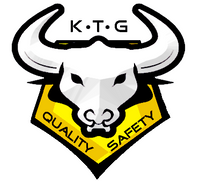Safety shoes / boots are shoes made with a protective reinforcement at the front, usually beneath the shoes surface. This makes the front of the shoes durable against falling objects or any kind of compression, protecting the wearer's toe from harm. They can also be inserted with a sole plate in the main sole to guard against sharp objects that may come in contact with you feet from below. The reinforcements are normally made of steel hence they are also known as steel toe cap shoes.
Towards the end of World War II (1939-1945) when the laws on workers compensation were introduced, industrial safety became an issue as replacing a injured worker no longer meant that it is cheaper and faster than introducing safety measures. Prior to the enactment of the workers compensation law, companies simply replace injured workers without giving them much or any compensation.
This liability cost made companies focused on having equipment and gears that ensures the safety of their workers... and their own pocket.
The idea of a steel-toe boots originated from Red Wing Co in the 1930s but was made common by the industrial powerhouse of Europe -- Germany during the 1940s. The marching boots of officers in Germany during World War II was also reinforced with steel toe cap.
In 1970, the U.S. Congress enacted the Occupational Safety and Health Act or what is commonly know was OSHA. This act was created to ensure compliance on workplace safety standards. By default, any workplace that posed the threat of foot injuries will require the use of protective footwear.

Fast forward to today, safety footwear still plays an important part in industrial activities and the importance of safety ensures that they will continue to stay relevant for the foreseeable future. The only difference now is that more people demand that safety shoes look fashionable or stylish as compared to their ancestors - which is the main reason why KTG Safety created the collection of stylish sports safety shoes!
